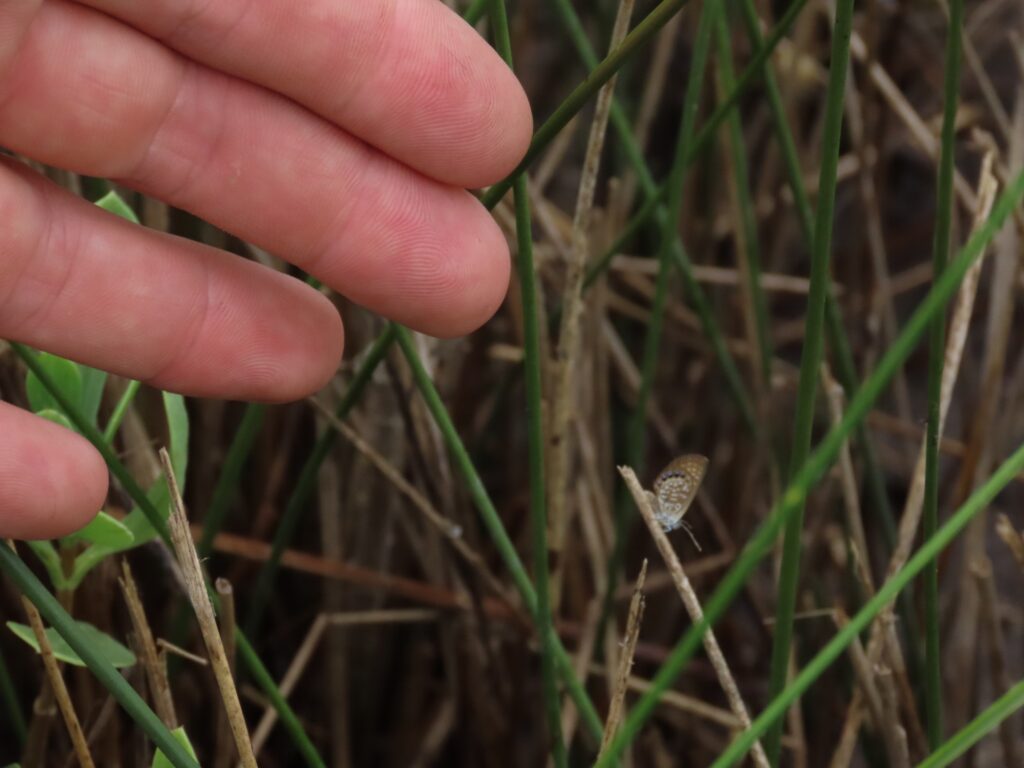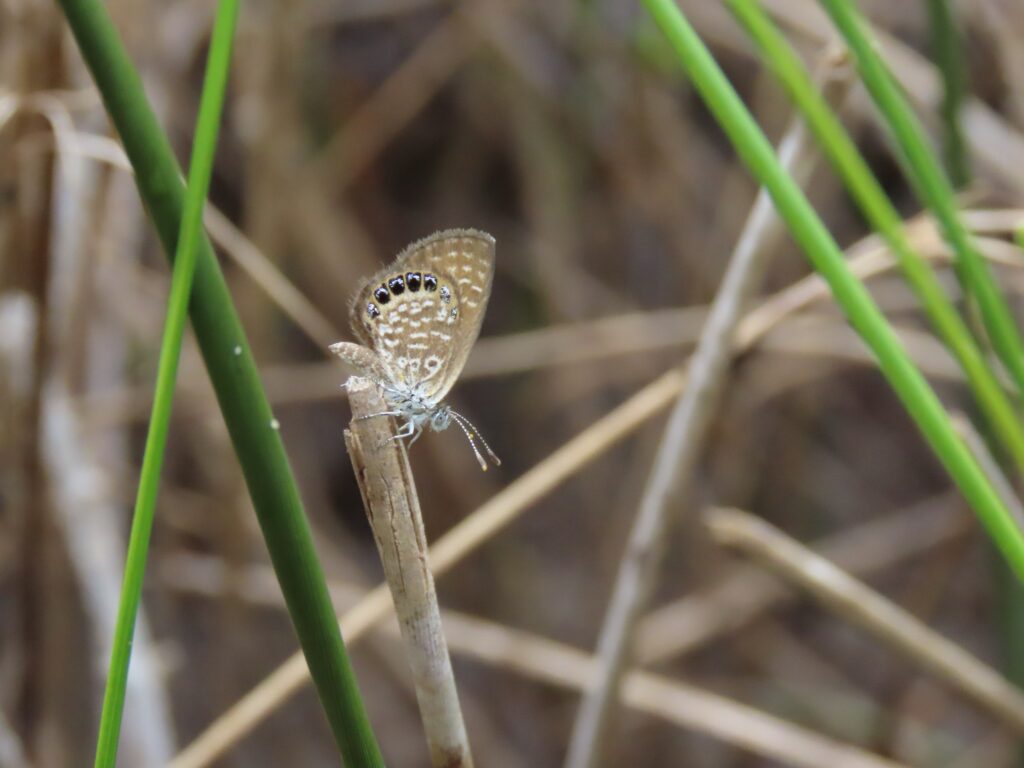



This week for Flora and Fauna Friday we have a pair of unrelated but extreme exemplifying butterflies, the Eastern Giant Swallowtail (Papilio cresphontes) and the Eastern Pygmy-Blue (Brephidium pseudofea).
The reason why I’ve decided to shine a spot light on these two unrelated species today is because they represent the full range of physical size for our native butterfly species here in South Carolina. Additionally, their preferred natural habitats overlap quite well and you may very well see both species on the same day in the same place. Let’s start with the little one.
The Eastern Pygmy-Blue is a miniscule butterfly in the Hairstreak family. Usually it’s no bigger than a fingernail. Its underside scales are overall a warm golden-brown down the wings, blending into a silvery-white body. Across the underwing are dashes of white and a trailing edge on the hindwing of six small black and metallic-silver eyespots. The upperside of females is a cinnamon-brown and males a darker shade of cinnamon but with a flash of sapphire blue over and along the body. The Pygmy-Blue can be a troublesome butterfly to find due to its itty-bittiness and preferred habitat, salt flats. The Eastern Pygmy-Blue caterpillar hosts on just as select few species of glassworts and so the adults can only be found in and around these sunny, soggy, sea-breezed, salt-saturated sand-lands. Adults begin flying in late spring and continue through to the end of summer in coastal South Carolina.
The Eastern Giant Swallowtail is a big honkin’ butterfly. They can grow nearly the size of your hand but are generally about six inches wide. Beyond their size, which dwarfs even our other swallowtails, they’re easy to identify by just their coloration. The upper surface of their wings is slate-black with a thick pastel-yellow line of blotches from one forewing tip straight through to the other and another line of yellow blotches running from the “wrists” of the forewings down where they make a “V” near the inner corner of the hindwings, just below a set of sky-blue and sunset-orange eyespots. From below they are even more distinctive, with the entire body and much of the wings being basted in a pure wash of butter-yellow. Through the center of the hindwing underside runs a series of powder-blue crescents and blood-orange blobs bordered with ink-black. The Eastern Giant Swallowtail is not a hard species to spot when you’re in the right place. They patrol the fringes of maritime forests and tidal creeks and are especially common along barrier islands and the Sea Islands. This is because they’re searching for or patrolling around their most prolific native host plant, Toothache Bush, which grows across the coast of the Lowcountry. The caterpillar of our Giant Swallowtail can also eat citrus leaves, and so they’re also a common visitor to orchards and coastal yards. Their caterpillar is easy to spot too. Not only is it big, it also has a distinctive color pattern of white, brown, and black blended together to create a perfect disguise as bird poop. This camouflage helps keep the caterpillars safe from avian predators but does make them stand out starkly against green foliage to the trained eye. Adult Giant Swallowtails fly from mid-spring until down into fall here in the Lowcountry.